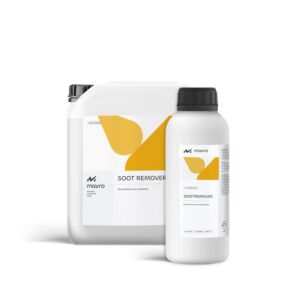Bitumen Remover Gel
Efficient gel remover for removing Tectyl® residues, anti-rust coatings and other oil and wax emulsion based products.
PRODUCT DESCRIPTION
Bitumen Remover Gel is a mild and effective product for the removal of Tectyl® residues and anti-rust coatings.
Bitumen Remover Gel is a highly concentrated mixture of surfactants and dissolves the most stubborn wax and oil based products.
Bitumen Remover Gel is completely biodegradable.
USE
Bitumen Remover Gel can be applied on almost all porous and non-porous surfaces such as metal, plastics, concrete, masonry and natural stone. Common surfaces are trains, subways, street furniture and buildings.
CHARACTERISTICS
• Quickly and effectively removes the most stubborn Tectyl® residues, bitumen / wax and anti-rust coatings.
• Suitable for many surfaces
• Powerful dissolving power
• Completely biodegradable
• Suitable for both indoor and outdoor use
APPLICATION CONDITIONS
Bitumen Remover Gel can be used in all dry weather conditions.
INSTRUCTIONS
1. Apply Bitumen Remover Gel with a brush.
2. Let the product dwell 30 minutes up to 5 hours on the graffiti.
3. Jet of the graffiti using high pressure (80-150 bar) and hot water (~70-90°C). Pressure depends on the surface.
4. Optional: apply a permanent or semi-permanent anti-graffiti coating directly after removal of graffiti.
PACKAGING
1 and 5 L
CONSUMPTION
Take into account a consumption of 5 - 10 m2/L surfaces and 5 - 15 m2/L on non-porous surfaces. Consumption always depends on the surface and the graffiti.
STORAGE
Can be stored in original unopened packaging for at least 24 months. Store in a dry, cool and frost-free place.
HEALTH AND SAFETY
Avoid skin and eye contact, wear suitable gloves, protective clothing and safety goggles. When in doubt, always consult the safety data sheet or our R&D department.
-
Icon
-
Icon
Support
Our advisors are happy to help you
-
Icon
Pay later!
Afterwards pay possible!
-
Icon











